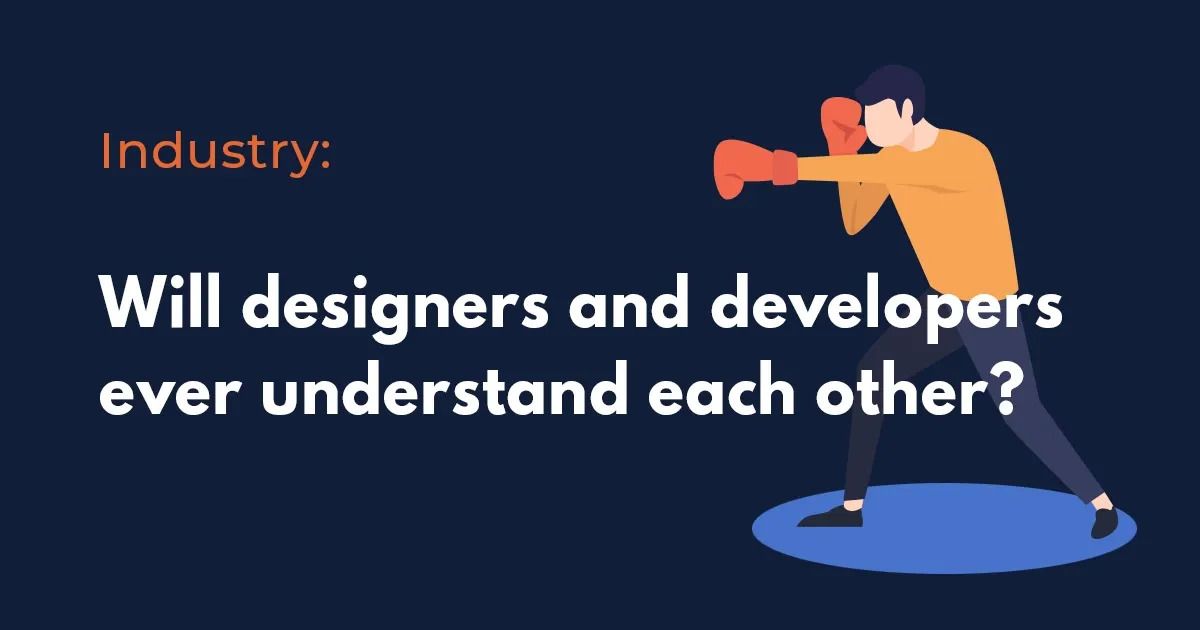Why can’t developers and designers get along?
 FUNCTION12
FUNCTION12
The Tale of Two Cities: Developers and designers
So many websites and applications are made with the collaboration of designers and developers. Although the hundreds and thousands of pages or interfaces that we face daily are smooth and perfectly operational, the actual process while building such designs and structures may have been quite rocky.
Why? Well, designers and developers sometimes do not get along so well.
Why can’t developers and designers get along?
Although a designer and a developer are all working towards the same objective, their perspective on that goal may actually be different. Let’s say we’re building a website this month. Designers will focus on the overall display, whereas developers will usually focus on the website’s functional aspect. Many problems occur when the designer sees the final outcome where some designs are a bit off. After the design files are handed over, the developer might ignore some of the small aspects of the design. It might be for a better-functioning website or just thought it was too trivial to add. But no designs are made for nothing, as all codes are written for a reason.
So why do such obstacles happen between these parties? It’s clear that we all want the same thing: building a good website(within the deadline.)
But it’s actually common for professionals in different teams to misunderstand each other. It’s rather natural to not be able to understand the technology that you don’t have much knowledge of. What we have to practice is actually learning to understand each other.
What are some ways to get along?
1. Going into designer meetings
It’s common for the product manager and designers to have meetings. It’s also very common for designers to have meetings before and during the process of their work. However, it’s rare to see the developers being invited to such meetings and end up not being updated about the priorities agreed on during brainstorming sessions.
Inviting the developer to such meetings, it will allow all parties to be able to understand on the same page. Both designers and developers can discuss any points to note before starting the design or development to prevent any quarrel before it’s too late. This process might even shorten the hours spent on design handoff meetings too.
2. Communicate with feedback
Some of the common conflicts come from missing design details during development. Developers may regard it as a trivial matter and remove or edit it, but no designer will make details for no reason. So, it’s important and even advised to share feedback in between the designing and development process. Especially after receiving the design file, rather than completing the codes, and then they receive feedback.
3. Cooperate as a team
Although developers and designers are very different professionals, If we only regard developers and designers as two different professionals, it won’t help bridge the gap between the two parties. Rather, try to see each other as a team. Everyone wants to finish and release a product by the deadline with great quality and to do that, cooperation is inevitable. Compromise is usually difficult when you can’t understand the other person. So rather than hating, talk about it and negotiate. Each adjustment will be a step further to becoming a better team.
Conclusion
At the end of the day, we all want to make a great outcome. But to do this, consistent teamwork based on understanding and compromising must be followed.
Looking for Figma-to-code? Check out FUNCTION12 today.
Subscribe to my newsletter
Read articles from FUNCTION12 directly inside your inbox. Subscribe to the newsletter, and don't miss out.
Written by

FUNCTION12
FUNCTION12
Insert your Figma URL and get code immediately. FUNCTION12 allows developers to automate their repetitive tasks in the front-end and allows to boost their productivity.